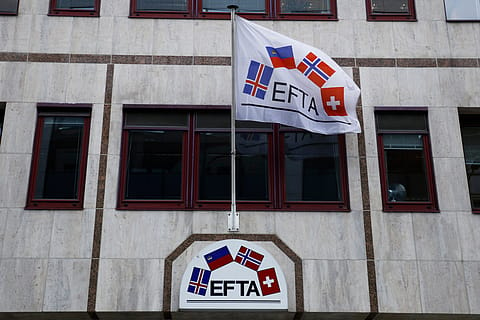India-EFTA Trade and Economic Partnership Agreement to come into force on Oct 1; experts say reforms can help fulfil $100 billion FDI dream
Experts say India could do more to facilitate foreign direct investment (FDI) and export opportunities that the agreement offers.

Even as the India-European Free Trade Association (EFTA) Trade and Economic Partnership Agreement (TEPA) comes into effect on October 1, experts say India could do more to facilitate foreign direct investment (FDI) and export opportunities the agreement offers.
Signed on March 10, 2024, the agreement outlines a commitment by the EFTA states to aim for an increase in FDI from their investors into India by $100 billion, and through these investments, create 1 million direct jobs in the country over the next 15 years. The EFTA’s market access offer under TEPA covers 100% of non-agri products and a tariff concession on Processed Agricultural Products (PAP).
The EFTA member countries are Switzerland, Norway, Iceland, and Liechtenstein.
“The opportunity sectors where EFTA capital is likely to flow are clean energy and green tech, medical devices, electronics and semiconductors and industrial equipment and automation,” says Rudra Kumar Pandey, Partner, Shardul Amarchand Mangaldas.
“India targets 500 GW of non-fossil capacity by 2030, with EV penetration projected to reach 30% of new vehicle sales by 2030; domestic market for medical devices expected to grow from $12 billion in 2023 to $50 billion by 2030; India’s electronics market projected to hit $300 billion by 2026; semiconductor demand expected to reach $80–90 billion by 2030,” Pandey points out, adding that India’s manufacturing sector aims to contribute 25% of GDP by 2030, offering scale for EFTA firms in the industrial equipment and automation sector too.
According to Pandey, the policy moves that could further incentivise EFTA companies include a dedicated India–EFTA Bilateral Investment Treaty (BIT) to provide the missing legal certainty, as existing BITs with Switzerland and Iceland stand terminated. He also says faster tax dispute resolution (India currently has a stock of ₹6 lakh crore pending indirect tax disputes) and credible enforcement of contracts would reduce investor risk.
Expanding plug-and-play clusters and certification infrastructure across Maharashtra, Karnataka, Tamil Nadu, and NCR is another suggestion, he feels, that will lower transaction costs and improve ease of doing business.
Recommended Stories
Meanwhile, the Union commerce ministry has stated that TEPA will help India’s exports of processed food products, marine products, textiles, leather products, gems and jewellery, rice, guar gum, pulses, and a host of other services, including IT, business services, and education.
“The TEPA can serve a much bigger purpose than just expand our exports of textile and apparel items to the four member states of the EFTA,” Ashwin Chandran, chairman, Confederation of Indian Textile Industry (CITI), said.
“The TEPA will complement the gains which are likely to accrue for Indian businesses from the free trade agreement (FTA) with the European Union, which is currently being negotiated,” he added.
India’s exports to the EFTA stood at $72.37 million in 2024, accounting for 0.41% of the EFTA’s total imports.